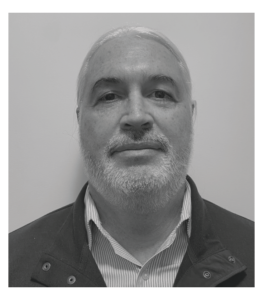Gene Locklear | Source | Artificial Intelligence Research Scientist at Sentient Digital, Inc.

Gene Locklear
Gene Locklear joined Sentient Digital as an Artificial Intelligence Research Scientist to assist in the development of cognitive AI solutions for military simulations involving human-emulated military decision-making. Prior to his work at Sentient Digital, Gene served twenty-seven years in the U.S. Marine Corps as an infantryman, Special Operations team leader, and Infantry Battalion Operations Chief. After his military service, Gene received from the New York Institute of Technology (NYIT) a B.S. in Computer Science in 2012 and an M.S. in Computer Science in 2014. At NYIT, he specialized in Machine Learning and Pattern Recognition and did extensive work for DARPA and the National Science Foundation on the use of Pattern Recognition for Biometric Authentication. In addition to his work at Sentient Digital, Gene is currently a Computer Science Ph.D. candidate at Pace University. His research interest centers on the use of artificial neural networks in solving pattern recognition problems and the application of Deep Learning neural networks. He has a passionate interest in the emergent behavior of systems and the idea of artificial life.
-
Sentient Digital, Inc. (http://sdi.ai)
Artificial Intelligence Research Scientist
-
Back to School: Advanced Degrees in Computer Science
Graduates with a degree in computer science continue to be in high demand, and the job growth rate for software developers, information security analysts, computer systems analysts, database administrators and web developers is expected to grow much faster than most occupations. This article features expert commentary from Gene Locklear.
Article -
Viable Use Nanotechnology: The Future Has Arrived
The commercialization of nanotechnology is in the early days but expected to expand considerably in the next few years. This article features expert commentary from Gene Locklear.
Article -
Expert Predictions for AI and ML in 2021
AI and ML in 2021: Experts are predicting breakthroughs in algorithms, applications, use cases and adoption. This article features expert commentary from Gene Locklear.
Article
-
"When you are searching for a solution in a space that is infinite, genetic algorithms (GA) find a 'reasonable' solution because we cannot possibly search every choice in the search space. GAs give rise to heuristics—the right choice when it is impossible to know the best option. We resort to GA to find a solution that is 'good enough' (a heuristic) and have an infinite or computationally infinite number of possible solutions," Gene Locklear, Senior Artificial Intelligence Research Scientist at Sentient Digital, Inc., told us.
"GAs don't need data to operate. They arrive at solutions by a stochastic process (randomness). The configuration of the DNA of the GA is very much data-driven; the GA needs to know what are the possible components of a decision before it can randomly combine those components with seeing which one(s) are optimal."
5G networks offer numerous choices for routing traffic often generated randomly, each of them varying in the demands they make on bandwidth. "Bandwidth is the chokepoint ...never enough...GAs search for the best possible route for network traffic (best path requires the least bandwidth), which is a great place for heuristics because the number of paths is computationally infinite," Locklear said.
-
Brain-machine interface is another application that is getting a boost from nanotechnology. “Due to the nanosensors’ tiny size, the number of them used for picking brain signals increases by double-digit multiples,” Gene Locklear, Senior Artificial Intelligence Research Scientist at Sentient Digital, Inc., told us. He went on:
“The processing of this many signals with AI is a forbidding challenge. Techniques from emergent learning are used to aggregate data before it can be analyzed. The methods are akin to flocks of birds that fly and return in concert. They have implicit rules by which the subordinate birds take cues from the lead bird without explicit guidance.”
“Reinforcement learning is a key tool which can model for the collective behavior and continuously learn from the data to achieve a predefined objective. When out of the lab, human users confirm the validity of the results,” he added.
-
“If you have ambitions to lead a team of programmers or rise to a management position, an advanced degree may be especially useful, though it is not always necessary,” Locklear said.
Locklear recommended computer/network security and software engineering, if you’re getting an MS primarily to increase your earning potential. “On the other hand, if you’re drawn to AI, pursue that; if you’re drawn to the intersection between technology and medicine, choose bioinformatics.”
Locklear recommended choosing a program that is both regionally accredited and accredited by the Accreditation Board of Education and Technology. “Potential employers and professional organizers are not likely to take your advanced degree seriously without this,” he warned.




